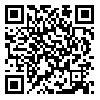Volume 4, Issue 2 (Summer 2014)
PTJ 2014, 4(2): 102-108 |
Back to browse issues page
Naghmeh Gheidi * 
 1, Heydar Sadeghi2
1, Heydar Sadeghi2 
 , Saeed Talebian Moghadam3
, Saeed Talebian Moghadam3 
 , Farhad Tabatabaei Ghoshe4
, Farhad Tabatabaei Ghoshe4 
 , Thomas Walter Kernozek
, Thomas Walter Kernozek 


 1, Heydar Sadeghi2
1, Heydar Sadeghi2 
 , Saeed Talebian Moghadam3
, Saeed Talebian Moghadam3 
 , Farhad Tabatabaei Ghoshe4
, Farhad Tabatabaei Ghoshe4 
 , Thomas Walter Kernozek
, Thomas Walter Kernozek 

1- PhD Candidate in Sports Biomechanics, Faculty of Physical Education and Sport Sciences, Kharazmi University, Tehran, Iran
2- faculty of physical education and sport sciences, Kharazmi University
3- Tehran University of Medical Science
4- University of Social Welfare and Rehabilitation Sciences
2- faculty of physical education and sport sciences, Kharazmi University
3- Tehran University of Medical Science
4- University of Social Welfare and Rehabilitation Sciences
Abstract: (6328 Views)
Purpose: The purpose of this study was to investigate the kinematic and kinetic variables, which predict anterior tibia shear force during single-leg landing in female athletes.
Methods: Forty-three subjects (mean and standard deviation for age 21.12 ± 2.00 y, height 168.58 ± 7.62 cm, and weight 60.27 ± 7.80 kg) participated in this study. Kinematic and kinetic variables of lower extremity and trunk during single-leg landing were collected by 5 Vicon cameras and Kistler force plate. Stepwise multiple regression and Pearson correlation were used to identify predictor variables of anterior shear force (P ≤ 0.05).
Results: Peak of extensor moment (P = 0.004, r = -0.394) and maximum knee flexion (P = 0.007, r = -0.370) were the best predictors that explained 30% of the variance of the shear force data. Therefore, rise in maximum extensors moment of knee and knee maximum flexion causes increase and decrease in anterior shear force, respectively. In addition, a significant relationship between trunk flexion (P = 0.039) and knee flexion angular velocity (P = 0.048) at the moment of initial contact with the anterior shear force.
Conclusion: On the basis of previous research, and the relationship between clinical findings, the noncontact of anterior cruciate ligament injury during landing was confirmed. These results can be used in prospective studies examining modifiable noncontact risk factors of ACL injury.
Keywords: Proximal Tibia Anterior Shear Force, Single Leg Drop Landing, Kinematic and Kinetic Variables, Female Athletes
Type of Study: Research |
Subject:
Special
Received: 2014/01/15 | Accepted: 2014/04/27 | Published: 2014/07/1
Received: 2014/01/15 | Accepted: 2014/04/27 | Published: 2014/07/1
| Rights and permissions | |
 |
This work is licensed under a Creative Commons Attribution-NonCommercial 4.0 International License. |
